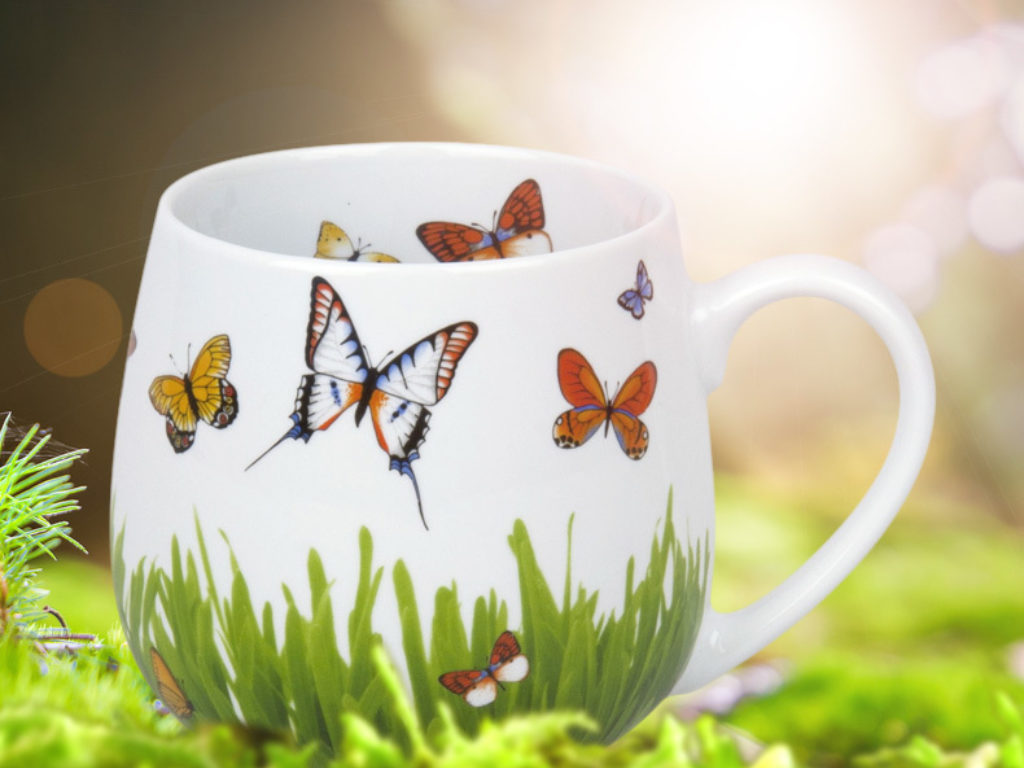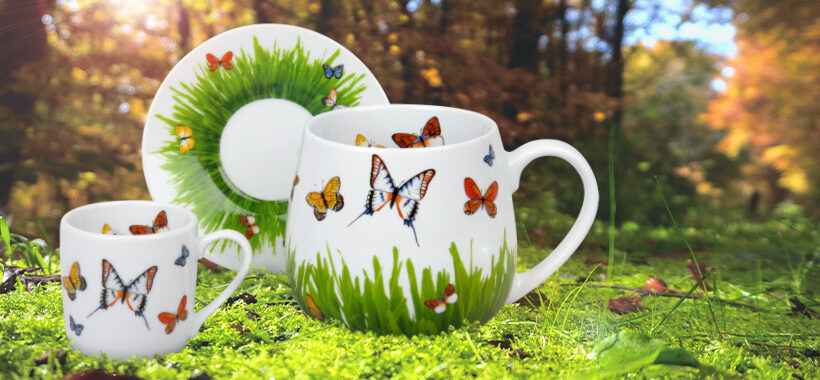Porcelain is leading in environmental protection
More sustainable, safe and less expensive
The topic of sustainability is on everyone's lips at the end consumer or even at the trader. It is known that plastic-coated paper cups pollute the environment. But that the paper cups also cause higher costs is hardly known. Also unknown is the harmfulness of so-called bamboo dishes.
So here are some facts:
The higher sustainability of ceramic/porcelain cups has been proven in several studies.
Looking at the entire life of a paper cup with plastic lining or even plastic lid from the raw materials, production, logistics to the disposal, ceramic / porcelain cups are far better than disposable cups and stainless steel / plastic variants (according to CIRAIG study, Canada1) and study by the Royal Institute of Technology, Sweden 2)) with regard to environmental influences like water consumption, resource consumption, climate change and health. According to the Royal Institute of Technology, the ceramic / porcelain cup has the advantage in energy after 10 times of use2).
According to Deutsche Umwelthilfe, reusable cups are also much more environmentally friendly than disposable cups made of recycled material or bioplastic parts such as bamboo3).
The costs are especially interesting for the serving of coffee. The CIRAIG study1) shows that disposable cups with lids are more expensive than ceramic /porcelain cups when used repeatedly. Using a deposit system of ceramic/porcelain cups, repeated use can be promoted and the to-go cup can be used for customer loyalty. The reusable cup is already better on the energy side from 10 times of use (according to study of The Royal Institute of Technology, Sweden 2)).
On the other hand, statements by the German Consumer Center NRW about pollutants in so-called bamboo dishes4 are alarming.
Bamboo dishes have been more frequently discussed as an ecological alternative lately. But it is a mixture of bamboo or corn with other ingredients often including plastics such as melamin and other toxic ingredients. In tests of the chemical investigation office Stuttgart a multiplicity of bamboo articles gave melanin and formaldehyde to the food 4).
The consumer Center came to the clear conclusion that stainless steel, glass and porcelain are recommended for contact with food and hot drinks 4).

See our environmentally friendly coffee-to-go >>

1) Source: Study „ Life cycle assessment (LCA) of reusable and single-use coffee cups” von CIRAIG (International Reference Centre for the Life Cycle of Products, Processes and Services) Montréal (QC) Canada.
2) Source: Study „Life Cycle assessment, A comparative LCA of ceramic cups and disposal paper cups“, The Royal Institute of Technology, Schweden
3) Source: Deutsche Umwelthilfe e.V., “Coffee to go-Einwegbecher-Umweltauswirkungen und Alternativen, Hintergrundpapier der Deutschen Umwelthilfe, 01.09.2015
4) Source: German consumer center NRW, „Schadstoff-Gefahr in Bambus-Geschirr, 26.04.2018

